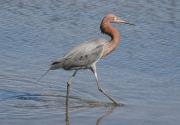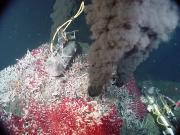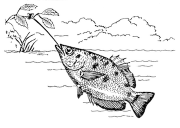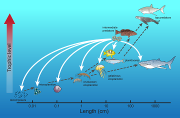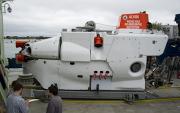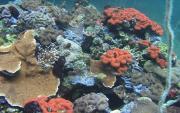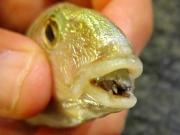Radio Program
Our regular Science and the SeaTM radio program presents marine science topics in an engaging two-minute story format. Our script writers gather ideas for the radio program from the University of Texas Marine Science Institute's researchers and from our very popular college class, Introduction to Oceanography, which we teach to hundreds of non-science majors at The University of Texas at Austin every year. Our radio programs are distributed at to commercial and public radio stations across the country.
It doesn’t always pay to be beautiful. By the early 20th century, for example, several shorebirds had been hunted to near-extinction for their beautiful plumage. They needed federal protection to keep them from disappearing.
Anyone who’s had the flu knows that a virus can really drain your energy. But some viruses found in the deep ocean seem to take this energy draining to the extreme. They force bacteria to “burn” their energy reserves, then use that energy for their own.
The archerfish is the sharpshooter of the seas. It lurks near the shore, in estuaries and mangrove forests. When it sees a tasty bug or even a small lizard on a low-hanging leaf or branch, it fires a powerful jet of water. The impact stuns the target and knocks it into the water, where it’s easy prey.
The world’s biggest hot tub isn’t in Cancún or South Beach or even Las Vegas. Instead, it extends almost half-way around the world, from the east coast of Africa to the middle of the Pacific Ocean. The water in the heart of this band peaks at about 86 degrees Fahrenheit, making it the warmest ocean water on the planet.
There’s strength in numbers. Fish and shellfish lay many trillions of eggs every year. That’s important to the health and survival of the species, because most of the eggs never hatch. In fact, most of them never even get the chance — they’re eaten by other creatures. But there’s strength in those numbers as well.The eggs may supply nutrients to the entire marine food chain.
The eggs are rich in essential fatty acids — compounds that are needed for normal development and body function. They sustain the embryos inside the eggs, as well as the young hatchlings.
More than a third of a century ago, scientists were cruising along the ocean floor off the Galapagos Islands when they saw something remarkable: a column of super-heated water bubbling up into the icy depths, surrounded by species of life that no one had ever seen before. They’d discovered hydrothermal vents — small geysers of mineral-rich water warmed by molten rock below the ocean floor.
The coral reefs off one of the islands of Palau are marine acidheads. They thrive in waters that are more acidic than those yet measured for any other healthy reef. That’s of interest because the world’s oceans are becoming more acidic as a result of our changing climate.
The American eel certainly gets around. It can travel from the western Atlantic Ocean to Lake Ontario. And after hanging out in the Great Lakes for a while, it turns around and heads back out to sea.
The ocean surface generally looks pretty flat. It gets choppy in storms, but otherwise we don’t see much difference in elevation. Yet that appearance is deceiving. Hills, valleys, and slopes contour the ocean surface just as they do the ocean floor. And studying those features can help scientists better understand the role the oceans play in our changing climate.
Here’s a tasty little story that’s likely to set your tongue a-waggin’. In fact, it’ll probably make you grateful that you have a tongue to wag at all. It’s the tale of a marine critter no bigger than the tip of your little finger that invades the mouth of a fish and eats its tongue. It then becomes a replacement for the tongue.
The creature has the tongue-twisting name of Cymothoa exigua. It’s an isopod — a type of crustacean. It’s found in the Gulf of California and other waters along the eastern Pacific.

